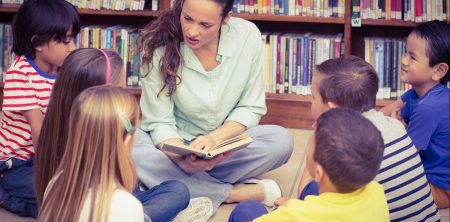The contemporary teacher recognizes that academic success remains intrinsically connected to social-emotional development—the ability to understand and manage emotions, establish positive relationships, and make responsible decisions. Increasingly, educators find valuable allies in high-quality kids animated shows that address complex emotional concepts through accessible storytelling. This strategic partnership creates powerful opportunities for developing emotional intelligence in ways that resonate deeply with young viewers.
Character-driven animated programming offers unique advantages for social-emotional education through its ability to visually represent internal emotional states. Exaggerated facial expressions, color symbolism, and thought bubbles make invisible feelings visible, helping children build emotional vocabulary and recognition skills. When teachers pause during emotionally significant moments and guide discussions about characters’ feelings, they help students develop emotional literacy that transfers to real-world interactions.
Educational psychologists have documented children’s remarkable capacity to form strong attachments to animated characters, creating emotional investment in storylines that explore social challenges. This connection generates natural motivation for perspective-taking—considering how different characters interpret the same situation based on their backgrounds, personalities, and prior experiences. Skilled teachers leverage this engagement to develop empathy, helping students recognize multiple viewpoints within conflicts portrayed on screen and within classroom dynamics.
Animated content typically presents social challenges through narrative arcs that demonstrate both problems and solutions, providing valuable models for conflict resolution. When teachers highlight the strategies characters employ to manage disagreements, repair relationships, or solve community problems, they establish reference points for classroom problem-solving approaches. “Remember how Daniel Tiger used his words instead of hitting when he felt angry? Let’s try that approach in our classroom.”
Many contemporary animated series specifically address emotional regulation through characters who model techniques for managing strong feelings. Deep breathing, counting to ten, using self-talk, taking space, and seeking adult support are frequently demonstrated strategies. Teachers who reinforce these techniques during viewing and reference them during real classroom situations help children build connections between entertainment and practical emotional management skills they can apply throughout their lives.
The safe distance provided by animation allows children to process challenging emotions and sensitive topics that might feel overwhelming in direct instruction. Issues like grief, family changes, friendship troubles, and fears become approachable when experienced vicariously through beloved characters. Perceptive teachers create space for students to discuss these feelings in relation to fictional scenarios before gradually helping them make personal connections when appropriate.
Diversity representation in modern animated programming provides powerful opportunities for developing cultural sensitivity and inclusion awareness. When characters from various backgrounds, family structures, ability levels, and cultural traditions interact respectfully on screen, children observe models of inclusive community building. Teachers who draw attention to these positive representations and facilitate discussions about respecting differences help establish classroom cultures where all students feel valued and included.
The episodic nature of animated series creates opportunities to revisit specific social-emotional themes throughout the school year, reinforcing concepts through spaced learning. A teacher might return to particular episodes during relevant teachable moments—selecting a story about perseverance before a challenging project, revisiting an episode about friendship repair following playground conflicts, or showing a segment about managing disappointment before standardized testing periods.
Animated content that acknowledges the complexity of emotions—showing characters experiencing mixed feelings or changing emotions—helps children develop more sophisticated emotional understanding. When teachers highlight these nuanced portrayals through guided discussion, they help students move beyond simplistic good/bad categorizations toward recognition that emotional experiences often contain multiple, sometimes contradictory elements simultaneously.
Parent partnerships strengthen when teachers communicate about the social-emotional content being explored through animated programming. By sharing information about episodes used in classroom instruction and suggesting follow-up conversations families might continue at home, educators create consistency between school and home approaches to emotional development. This collaboration acknowledges parents as essential partners while providing practical strategies for extending learning through everyday interactions.
Educators sometimes express concern about screen time replacing direct social interaction, but research indicates that mediated viewing experiences actually enhance rather than detract from interpersonal skills when implemented thoughtfully. The key distinction lies in active versus passive consumption—when teachers facilitate discussion, role-playing extensions, and real-world application of concepts portrayed in animated content, they transform viewing from isolated consumption to communal learning experiences.
Assessment of social-emotional growth presents challenges in educational settings focused on quantifiable academic measures. However, observant teachers gather valuable data by noting how students apply concepts from animated programming to classroom situations. When a child independently references a strategy demonstrated by a character or connects a current conflict to a scenario portrayed in an episode, these moments provide evidence of concept internalization and transfer to authentic contexts.
The integration of animated content into comprehensive social-emotional learning programs represents an evidence-based approach that meets children where they are—in a visually oriented world where stories and characters create meaning. By thoughtfully selecting programs that align with developmental needs, mediating viewing experiences through guided discussion, and connecting animated scenarios to classroom experiences, teachers transform entertainment into valuable social-emotional education that prepares children for success in school and beyond.

